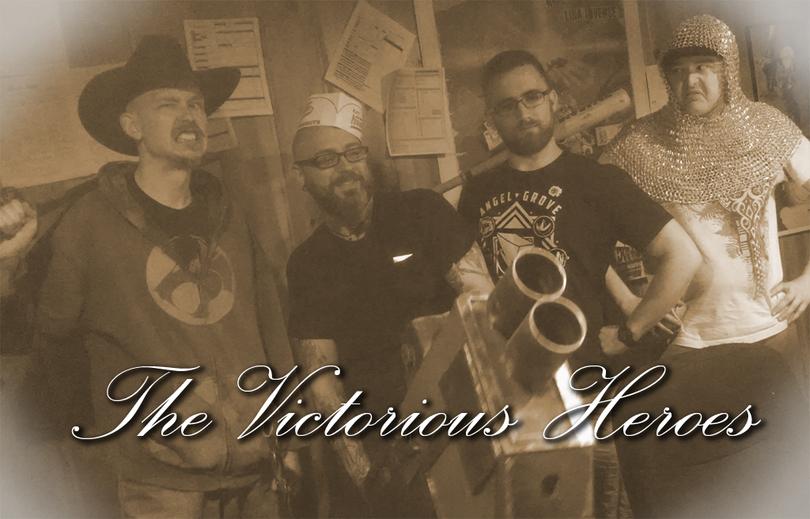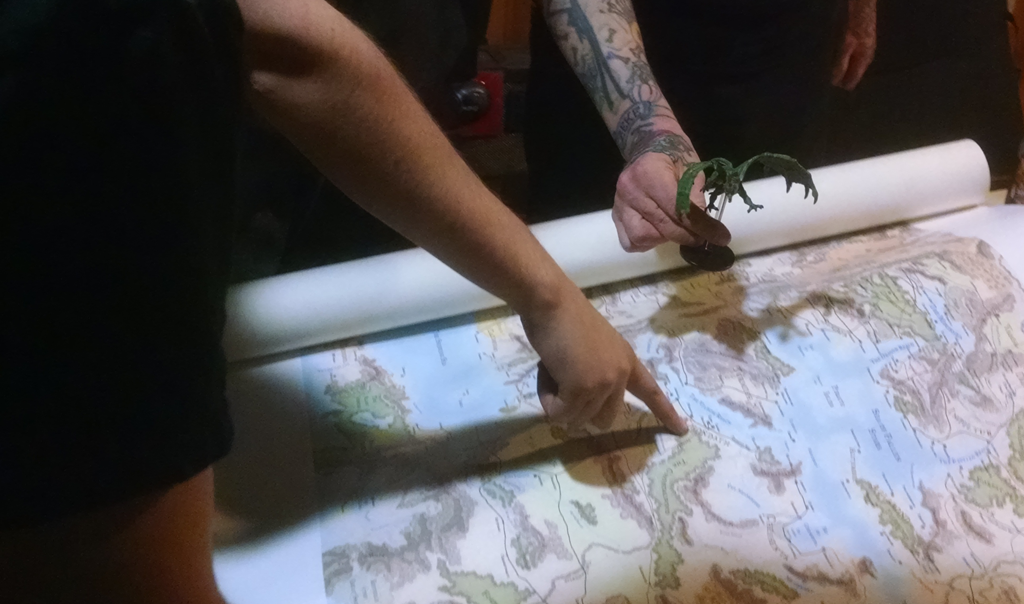Tips on Writing an Adventure

When things start get serious, the serious get adventuring. Adventures are a lot like quests in many ways with some noticeable differences. The most prominent being the scale of the problem. Adventures are by their nature big events -- things that will change the world at least a little.

When creating an adventure I come up with an overarching goal to accomplish. For example, bringing down a criminal organization, helping a hero take back her kingdom, or solving a complex mystery plot. By the end of the adventure there is a lasting impact on the world. I try to infuse the world of the current adventure with references from previous. It shows players their actions are making an impact.
After the goal is created I try to break down the different steps that it would take the players to get to the end. With these steps I break them down into quests. Each quest ends with the players getting one step closer to the adventure’s goal. For ideas on writing quests, check out my previous blog post.
Adventures can get quite long and be rather complex. It’s easy to write yourself into a corner or not know where things can go. To prevent this, I do NOT write out the ENTIRE ADVENTURE right off the bat. Try to keep it open and flexible. For most of the quests in an adventure, just determine the goals. Main points can be determined later on down the road. At the bottom of this post is an adventuring template I use.

Sometimes it good to rest and have fun.
When putting together an adventure it’s easy to over look your player characters and their lives. As protagonists they are vital to your story. Take a look into their backgrounds and see if you can work those into the overall story. You can even use character stories as a, break of sorts. When you’re trying to save the world it can be exhausting. It’s good to slow down and help out the little people. Like I say, it keeps the players invested in your world. I call these side-quests and can be used whenever you feel appropriate.
Lastly, hooks are just as important as in a quest and game session. Adventure hooks can be even bigger. By adding in a subtle hint at the end, you can leave players open for the next adventure. Example: An enemy saying his mission was successful right before he dies/gets away or the players find a message describing the involvement of a previously unrelated group to the plot.
Also, don’t feel obligated to answer all your players' questions by the end of the adventure. Leave some open to interpretation and later use.
If you’ve been reading along with my posts so far, you should be more than prepared to put a group together, write your own stories and have a blast! We’re here to have fun and be creative. I’d like to hear your stories of adventures in the past. Please share them in a comment below. Next week we discuss the concept of a campaign.
Thanks for reading see you next time!
Example Adventure: Turning last week’s quest into an adventure
Note: For tips on writing plotlines I highly suggest finding some creative writing books on the topic.
Adventure - <Name of the adventure (ie Cleaning up the Streets)>
Goal: Stop the kidnappers
1.Quest – A Missing Friend
- Intro: <describe how the players learn/are brought into the quest (ie a friend calls for help)>
- Main Point: <One of the important set pieces to cover (ie the friend’s house is empty)>
- Main Point*: <Another set piece in the storyline, that can also work as an ending point (ie the player(s) get a call from the kidnapper)>
- Goal: <The final part of the quest (ie the players confront the kidnapper and rescue their friend, finding an encrypted laptop)>
2.Quest – We Have You Now…
- Intro: After some time decrypting the laptop, they discover another kidnapping plot will happen. Rescued friend pushes to decrypt the laptop, if players reluctant.
- Main Point*: The players have to plan their ambush. This can take a while, so feel free to end the session after planning.
- Goal: The kidnapping is foiled and the players determine who the kidnappers are working for/with.
3.Quest - Bring Down the Hammer
- Intro: Having determined the source of the kidnappers, the friend finds out who it was and will rush off to confront the group.
- Main Point: <determine later>
- Goal: The group is stopped from continuing their kidnapping operations.
4.Side-Quest: <Description (ie Help your friend find a safe place to live)>
“Because I am a CLOWN!” - Tom Pitkin, when questioned about the need for multiple staplers.